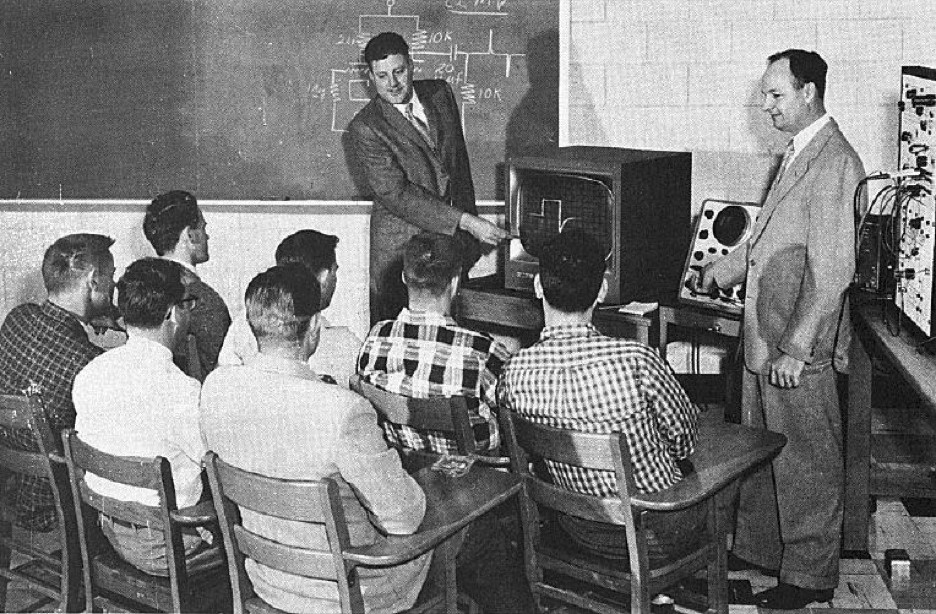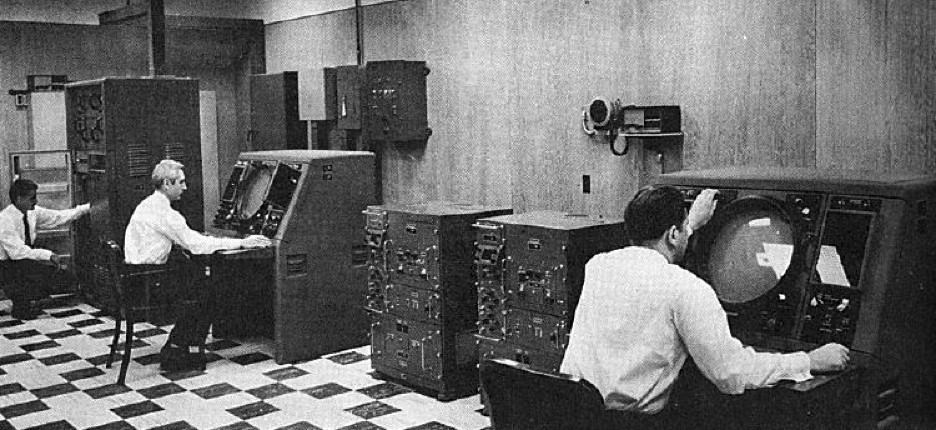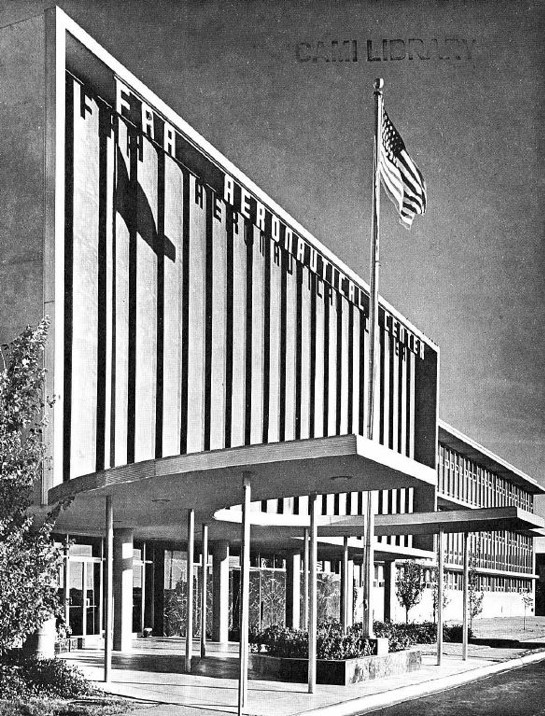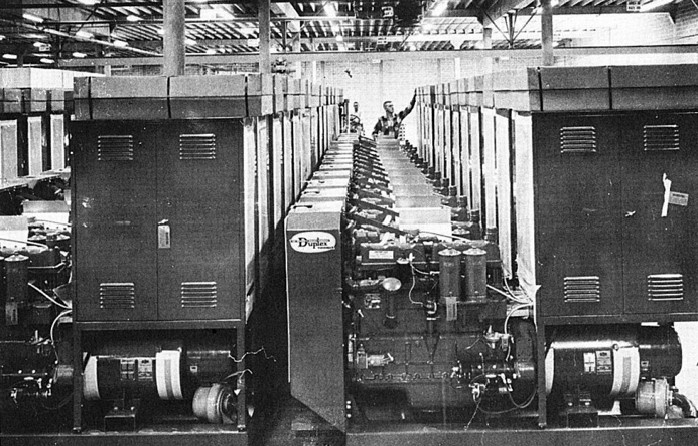The year was 1958, Dwight D. Eisenhower was President of the United States, average annual wages were about $4,600, unemployment was high, and the hula hoop had just been introduced.
Across the nation, the civil rights movement was underway. In Oklahoma, a student sit-in occurred downtown at Katz Drug Store led by Clara Luper, a pioneer in desegregation. Oklahoma’s governor was Raymond D. Gary and he was helping to improve the state’s highway system.
But in the south part of Oklahoma City, an area known as Will Rogers Field was also transforming. World War II barracks were changing into more modernized aeronautical facilities. Buildings were renovated and constructed to house training, central warehousing and supply for the Civil Aeronautics Administration (CAA).
On May 21, 1958, Senator A. S. "Mike" Monroney (D-OK) introduced S. 3880, a bill “to create an independent Federal Aviation Agency, to provide for the safe and efficient use of the airspace by both civil and military operations and to provide for the regulation and promotion of civil aviation in such a manner as to best foster its development and safety.”
Two months later, on August 23, 1958, President Eisenhower signed the Federal Aviation Act, transferring the Civil Aeronautics Authority's functions to a new independent entity called the “Federal Aviation Agency.” This new Agency would be responsible for all civil aviation safety. Although the Federal Aviation Agency technically came into existence with the passage of the Act, it actually assumed its responsibilities in stages. Under the provisions of the Act, the Federal Aviation Agency would begin operations 60 days after the appointment of the first Federal Aviation Agency Administrator. On November 1, 1958, retired U.S. Air Force General Elwood "Pete" Quesada became the first Federal Aviation Agency Administrator. Sixty days later, on December 31, the Federal Aviation Agency began operations.
There were many ‘firsts’ for aviation during 1958. Here is a series of some of those advancements:
- The first Trans-Atlantic Passenger Jetliner Service begins with flights between London and New York on the new British Comet Jet
- The first American satellite “Explorer I” was launched from Cape Canaveral
- The National Aeronautics and Space Administration (NASA) was created
- U.S. passenger jet flights began with National Airlines, providing Boeing 707 flights between New York and Miami
- The Secretaries of Commerce and Defense agreed to create an air traffic control system functionally compatible with the nation’s defense facilities in peace and in war
- The Civil Aeronautics Board (CAB) designated a “positive control route segment’, stating that any airspace between 17,000 and 35,000 feet to a width of not more than 40 miles. All visual flight rules (VFR) within that airspace would be prohibited regardless of weather. Only instrument flight rules (IFR) could be conducted with prior approval from air traffic control. This was a major modification from the “see and be seen” philosophy applicable to VFR operations
- The CAA designated the first five positive control routes on a trial basis, making this the beginning of improving safety through positive control
- Greenwich Mean Time (GMT) became the standard for all domestic air traffic control operations
- The Airways Modernization Board established the National Aviation Facilities Experimental Center (NAFEC) near Atlantic City. Today, we know it has the William J. Hughes Technical Center
- August 23, 1958 President Eisenhower signed the Federal Aviation Act of 1958 (P.L. 85-726) into law. The new FAA Agency consolidated the CAA, the air modernization board, and part of the duties of the civil aeronautics board, and the Air Force’s airways and air communication service
- Elwood “Pete” R. Quesada was the first Administrator of the Federal Aviation Agency. His first time to visit the Aeronautical Center was on November 14, 1958. He said that he “expected the aviation bill to have a profound effect” on aviation activities in the Oklahoma City area, particularly at the CAA Center.” After visiting the Center, he commented that he was “pleasantly shocked” on viewing the sprawling campus at Will Rogers field
- This year, was the first year that the total of transatlantic passengers travelling by air exceeded the number traveling by sea
- Fred Lanter was the Center Director during 1958 and the number of employees at the Center was approximately 1,788
- “The Beacon” was the Aeronautical Center’s first employee newsletter, or ‘house organ’ as it was called
- The Center, as talked about in the 1960 “Aviation World,” 1960 stated “Probably few Oklahomans realize just what the state has in this FAA ‘college.’ Opened just two years ago, the Center has grown steadily both from a manpower and facilities standpoint, until it now is one of the most important operations in the FAA.”
- As reported in the Daily Oklahoman, Jan 15, 1965 – “The Federal Aviation Agency’s Aeronautical Center is firmly rooted in Oklahoma City soil and will likely remain that way, as long as there are airplanes.” The article emphasizes that even back then, “The FAA facility’s emerging role of providing logistics and operational support for the entire agency has a stabilizing effect.” There were four ‘mainstream’ support functions located at Will Rogers Field: training, maintenance of air navigation facilities throughout the world, aircraft services base for the FAA fleet, maintenance of records on all airmen licensed by the U.S. and all aircraft U.S. registry. As exclaimed by Lloyd Lane, Center Director in 1965, “….We are more than a location but a collection of facilities.”
Happy Birthday to the Federal Aviation Administration, who continues to provide the safest, most efficient aerospace system in the world.
 FAA Instructors providing electronics training.
FAA Instructors providing electronics training.
 Maintenance of radar equipment was (and continues to be) an important aspect of the Center’s training.
Maintenance of radar equipment was (and continues to be) an important aspect of the Center’s training.
 The early years: the front of the headquarters building at the Aeronautical Center.
The early years: the front of the headquarters building at the Aeronautical Center.
 Among storage in the Logistics Warehouse was standby generator plants for VORTAC installations.
Among storage in the Logistics Warehouse was standby generator plants for VORTAC installations.